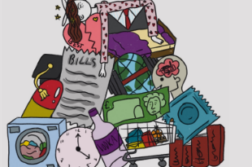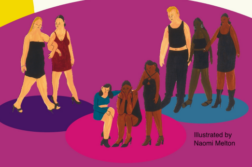The road to gaining equal rights for women in Britain has been a long one, and we haven’t reached the end yet. From suffrage to equal pay, reproductive rights to educational parity, women have been systematically oppressed until recent years, when it was finally acknowledged that we deserve equal opportunities to our male counterparts. Here is a brief timeline of some key events which slowly removed the restrictions placed on women which were trying to hold them back from being independent and respected members of British society:
1865: Elizabeth Garrett Anderson is the first woman to be recognised as a surgeon. She goes on to open her own medical school for women.
1867: The London Society for Women’s Suffrage is formed.
1869: The first women’s higher-education provision, Girton College in Cambridge, is founded by suffragette Emily Davies.
1870: The Married Women’s Property Act makes women legal owners and inheritors of their own money, even in marriage.
1878: The University of London is the first university to open its doors to women on equal terms to men.
1884: Women first play at the Wimbledon Tennis Tournament.
1888: Women are allowed to vote in borough and county council elections.
1891: The right for men to use corporal punishment against their wives is removed.
1907: The Qualification of Women Act allows women to be elected as borough and county council members, and as Mayor.
1914: Britain gets its first female police officers.
1918: Female property-owners over the age of 30 become the first women eligible to vote in Britain.
1919: Nancy Astor is the first woman to become an elected Member of British Parliament.
1920: The Sexual Discrimination Removal Act allows women access to work in the legal profession and accountancy.
1928: All women are granted universal suffrage on the same terms as men.
1929: Margaret Bondfield becomes to the first female Cabinet Minister as the Minister of Labour, 1929-31.
1930: Amy Johnson is the first woman to fly solo to Australia.
1944: The Education Act outlaws the marriage bar for teachers, so women can teach while married.
1956: Rose Heilbron becomes the first female judge in Britain.
1958: The Life Peerages Act means women can sit in the House of Lords for the first time.
1961: The contraceptive pill is first made available for married women on the NHS.
1967: The Abortion Act legalises abortion across Britain, excluding Northern Ireland.
1970: The Equal Pay Act makes equal pay compulsory between male and female employees.
1971: The first Women’s Liberation March is held in London.
1973: Women are allowed to join the London Stock Exchange for the first time.
1974: Contraception is made free on the NHS.
1975: The Sexual Discrimination Act makes it illegal to discriminate against women due to their gender in the workplace, education, and training.
1979: Margaret Thatcher becomes the first female Prime Minister of the United Kingdom.
1985: The Prohibition of Female Circumcision Act makes female genital mutilation illegal.
1986: Statutory maternity pay is introduced, meaning women continue receiving their salary during maternity leave.
1994: Rape in marriage is made illegal.
1999: The Sexual Discrimination (Gender Reassignment) Act makes it illegal to discriminate against transgender people in the workplace.
2002: Gay, lesbian and unmarried couples are given equal adoption rights to heterosexual couples.
2004: The Domestic Violence, Crime and Victims Act makes domestic violence a crime.
2009: Carol Ann Duffy is appointed the first female Poet Laureate.
2015: Libby Lane is the first female Bishop in the Church of England.
2019: Abortion is decriminalised in Northern Ireland.



